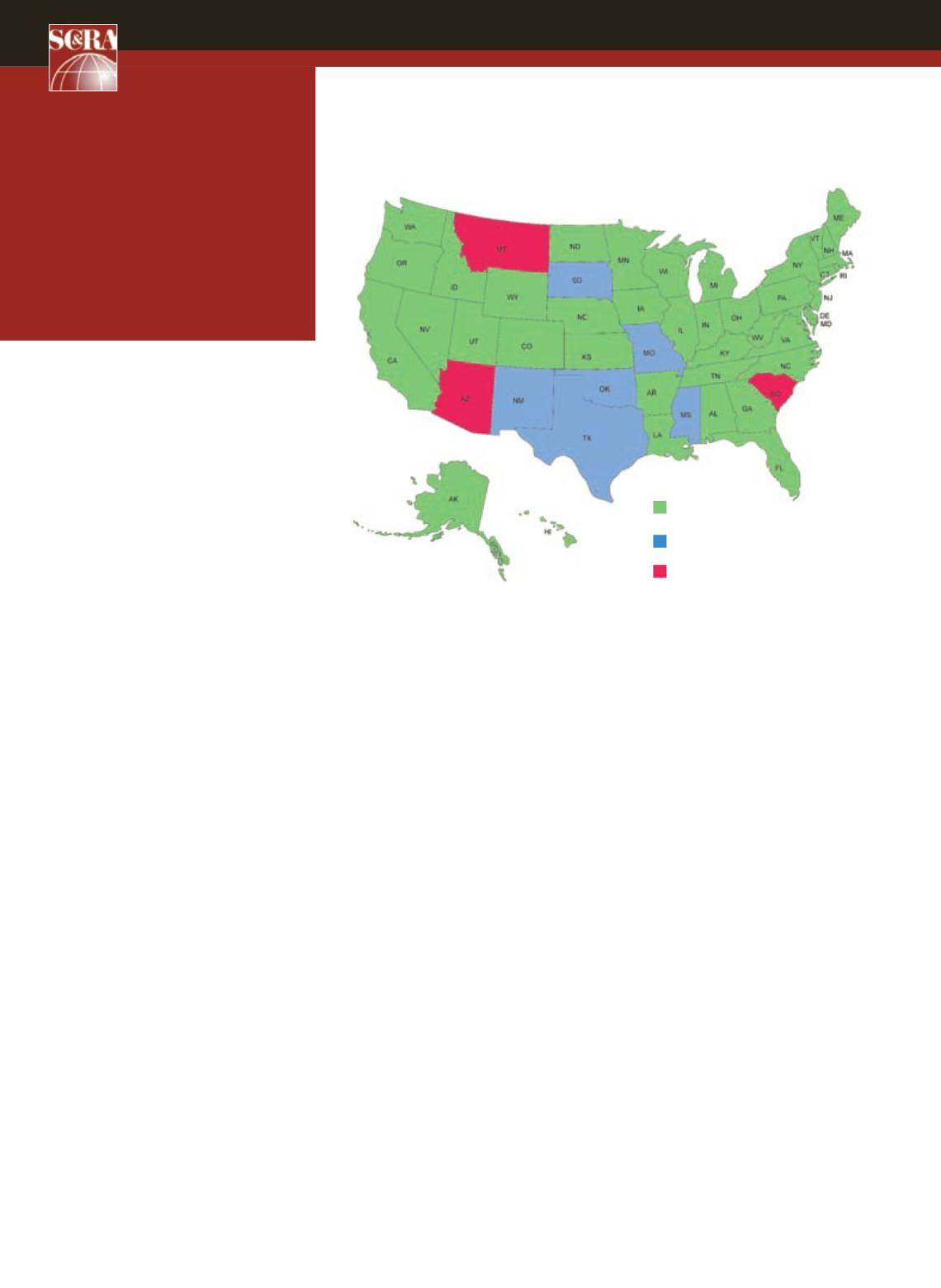
50
RISK MANAGEMENT
ACT
JULY 2013
Robert Moore
and
Kate Lasky
report that
districted driving laws are
getting more stringent.
no longer look at maps or GPS devices
while driving and holding the device. The
device must either be mounted in the car,
or the feature enabling the directions to
be spoken, must be activated. While it is
clearly dangerous to hold a mobile device
and have your eyes diverted to the device
while driving, it is difficult to ascertain
how diverting one’s attention to a mounted
GPS would be any safer. Using a paper map
in a car would clearly distract a driver’s
attention. Often these laws are more
focused on outlawing devices and targeting
specific activities, rather than correctly
focusing on the bad driving. Of course, the
safest way to handle the map and GPS issue
would be for the device to be set to a mode
where the directions are spoken, so that
the driver can keep both hands and eyes
on the road. This ruling from California
highlights the troubles in drafting overly
broad legislation.
Many other states also have “no talking
or texting while driving” statutes that are
drafted in a similar broad-based fashion. It
is likely these similar issues will be litigated
in multiple states, in an effort to determine
exactly which activities are being banned
and restricted. In fact, new guidelines
issued in April by the National Highway
Traffic Safety Administration (“NHTSA”)
are aimed at making it harder for drivers
to become distracted by navigation and
infotainment systems in new cars, by
encouraging car companies to create a
allow hands-free listening and talking, and
is used in that manner while driving.” In
People of the State of California v. Spriggs,
Steven Spriggs was cited for violating
this statute when he was cited for driving
and looking at a map on his cell phone
while holding the phone in his hand. The
defendant argued that the statute was
not designed to prohibit using the phone
to look at a map, but rather to eliminate
holding the phone while conversing, and
as such, he was improperly given a citation.
In determining how to interpret the word
“using” in the statute, the Court had to
look to the legislative history of the law.
In reviewing the analysis and comments
of the Senate bill, the Court found that
the goal was to “improve reaction time in
the event of an emergency by requiring
both hands to be on the wheel” and also
examined the physical distractions of
picking up a phone, punching numbers,
holding the phone, and pushing a button to
end the call.
As such, the Court found that neither
the plain language of the statute, nor
the legislative history, supported the
defendant’s position that the law was only
to prohibit hands-on conversing. Rather,
the Court held that the statute is designed
to prevent a driver from using a wireless
phone while driving, for any purpose,
unless it is being used in a hands free
manner.
As a result, drivers in California can
Distracted
D
istracted driving continues
to be a leading cause of
crashes, injuries and fatalities.
Distractions can take the form of visual,
where the driver takes his eyes off the
road; manual, where the driver takes his
hands off the wheel; and, cognitive, where
the driver’s mind is pre-occupied with a
task other than driving, such as a phone
conversation, text message exchange
or listening to a GPS recite directions.
Sometimes all three are involved, setting
the stage for a deadly accident.
Cellphone and texting laws are nothing
new. Currently, 11 states and the District
of Columbia ban talking on a handheld
cellphone while driving. Use of cellphones
by novice drivers is restricted in 36 states
and the District of Columbia. Bans on
text messaging while driving, are the most
restrictive, with 39 states and D.C. banning
texting for all drivers. Many cities have
enacted additional bans on cellphones and
texting, which are more restrictive than
their state limitations.
The clear intent of these laws is
to minimize distracted driving and
eliminate dangerous behaviors that
take a driver’s attention away from the
road. Unfortunately, the laws are often
drafted in such a way that they are overly
broad, inconsistent, or have unintended
consequences. In fairness, creating a law
that properly bans “distracted driving” is an
arduous task, as there are countless factors
that can “distract” a driver. Establishing a
law to ban every type of distraction would
be nearly impossible, and enforcement of
such laws would be even more difficult.
California litigation
This issue of overly broad legislation
recently became the subject of litigation in
California. Enacted in July 2011, California
Vehicle Code §23123 states “A person shall
not drive a motor vehicle while using a
wireless telephone unless that telephone
is specifically designed and configured to
All drivers
Partial
No ban
The map shows states which
have enacted texting laws.
SOURCE: INSURANCE INSTITUTE FOR HIGHWAY SAFETY


